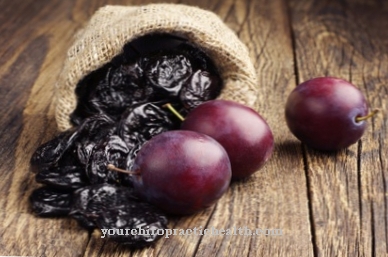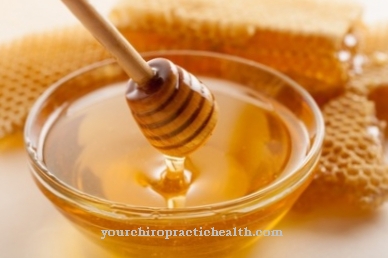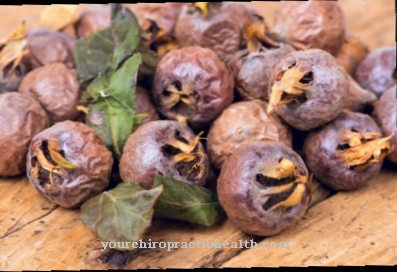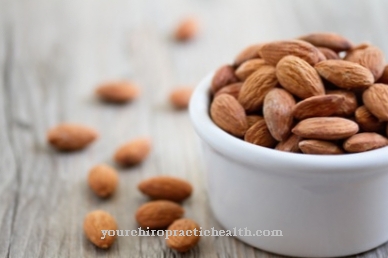Although the rhubarb tastes fruity-sour and the preparation is the same as with fruit, it is a vegetable. The rhubarb is related to the sorrel and belongs to the knotweed family.
What you should know about rhubarb

The rhubarb is native to China. It was first described as a remedy in the Chinese Peng-King herbal book around 2700 BC. However, the healing power was not due to the stems, but to the roots. The result was a powder that was taken against indigestion and to fight the plague.
It was not until the 18th century that rhubarb became a food. The English were the first to grow different types of rhubarb in the early 19th century. In the meantime, however, the vegetable, which prefers temperate climates, is widespread. It has been planted in Germany for around 150 years. The stem vegetables are very easy to care for in the right nutrient medium. If there is too little sunlight, the rhubarb will only produce thin stems. There are a total of around 60 species of the rhubarb genus.
The common rhubarb is most commonly used in Germany. The stems can be colored green or red, depending on the anthocyanin content.
The sticks with a light red flesh have a sweeter aroma than the dark red ones. The red-fleshed rhubarb varieties also contain less fruit acid, so they are milder. The skin of the rhubarb should only be peeled off from the older sticks because it is an important flavor carrier. Rhubarb is available in Germany from April to June 23rd. Then the season is over, just like with asparagus.
Importance to health
Rhubarb contains a lot of vitamin C and thus strengthens the immune system and the body's defenses. In winter, consumption can protect against colds. The high potassium content should also be emphasized, which means that the rhubarb has a dehydrating effect and promotes the transport of nutrients from the blood into the cells.
Sodium is also found in remarkable amounts. It aids digestion and stimulates bowel movement. Rhubarb also has a blood-purifying effect and is therefore very suitable for detoxification in spring. The rhubarb is particularly suitable as a compote for gently cleaning the intestines, liver and gall bladder. The fruit acids provide the refreshing aroma of the rhubarb and also stimulate the appetite. The active ingredients of the rhubarb root system are very strong, so they are used as a component of laxatives.
Ingredients & nutritional values
| Nutritional information | Amount per 100 gram |
| Calories 21 | Fat content 0.2 g |
| cholesterol 0 mg | sodium 4 mg |
| potassium 288 mg | carbohydrates 4.5 g |
| Fiber 1.8 g | protein 0.9 g |
The content of vitamins in rhubarb is average, but vegetables contain a lot of vitamins C and K as well as important minerals, especially potassium, magnesium, iron, phosphorus and some iodine.
The abundant citric and malic acid, the gut-friendly pectin, glycosides, tannins and essential oils are also very beneficial for health. Rhubarb is very low in calories. However, since sugar has to be added for consumption due to the strong acidity, this is canceled again. A good alternative is to use fruit juice for the various rhubarb recipes.
Intolerances & allergies
Since the leaves of rhubarb contain a lot of oxalic acid, they are poisonous. It is also in the stems. The acid binds calcium and therefore, if consumed in excess, can damage the health of bones and teeth. As the rhubarb gets older, so does its oxalic acid content. Therefore, it should not be harvested after the end of June.
Even people who suffer from stomach problems should not eat rhubarb. The harmful effect can be reduced by combining it with dairy products, because the acid is neutralized by the calcium it contains. If you have arthritis, rheumatism, gout or kidney stones, it is not recommended to consume rhubarb.
Shopping & kitchen tips
When buying rhubarb, quality should be considered. If it's fresh, this can be seen in the fact that the sticks are firm, slightly shiny, and the ends look juicy rather than dry. Wavy stems are not yet ripe. A purchase is not recommended.
Rhubarb should be wrapped in a damp cloth and placed in the vegetable drawer of the refrigerator. Here it stays fresh and crisp for a few days. Rhubarb can also be frozen well, either raw or prepared ready to cook, for example as a compote. Preparing rhubarb is pretty easy. In the case of young and very tender vegetables, it is sufficient to cut off the base of the leaves and the end of the stem after washing and cut the rhubarb stalks into pieces. Very thick, fibrous stems should also be peeled, as this will reduce the oxalic acid content.
The crushed pieces are lightly sugared and steep in their own juice for about half an hour. Then everything is boiled once and then cooked on a mild heat for five minutes. The rhubarb can now be used for cakes, compotes, jams, etc. The oxalic acid it contains also reacts with aluminum and metal. Rhubarb must therefore not be cooked in an aluminum pot, wrapped in aluminum foil or come into contact with another metal such as zinc, because all chemical compounds that result from it are poisonous.
Preparation tips
Rhubarb cannot be eaten raw and causes abdominal pain or other discomfort. The reason for this is that the oxal content in vegetables is too high. Only the stems are used in the kitchen, because the leaves are incompatible. Cakes, compotes, puddings and other delicious desserts can be prepared from the vegetables. Among the fruit cakes with rhubarb, a shortcrust pastry with the fruit pieces and a meringue topping is very popular.
Muffins with rhubarb are also popular, but you have to use a little more sugar than is indicated in conventional muffin recipes. Some cooks even use the rhubarb with meat dishes or as a side dish. Rhubarb, which is to be used to make juice, should not be peeled if the red pigment that sits under the skin is to be in the juice. Freshly squeezed rhubarb juice tastes very good, with a little sugar and then diluted with water. Rhubarb compote is made from pieces that are placed in a little water with sugar. The compote is seasoned with nutmeg, clove or cinnamon. Lemon juice goes very well with rhubarb.
The compote tastes delicious with vanilla pudding. The rhubarb can also be processed into jam. In addition, pieces of banana and orange juice harmonize very well. Rhubarb is also often eaten with strawberries. This is not only recommendable in terms of taste, because the strawberry is particularly low in nitrates and therefore creates a good balance.



























